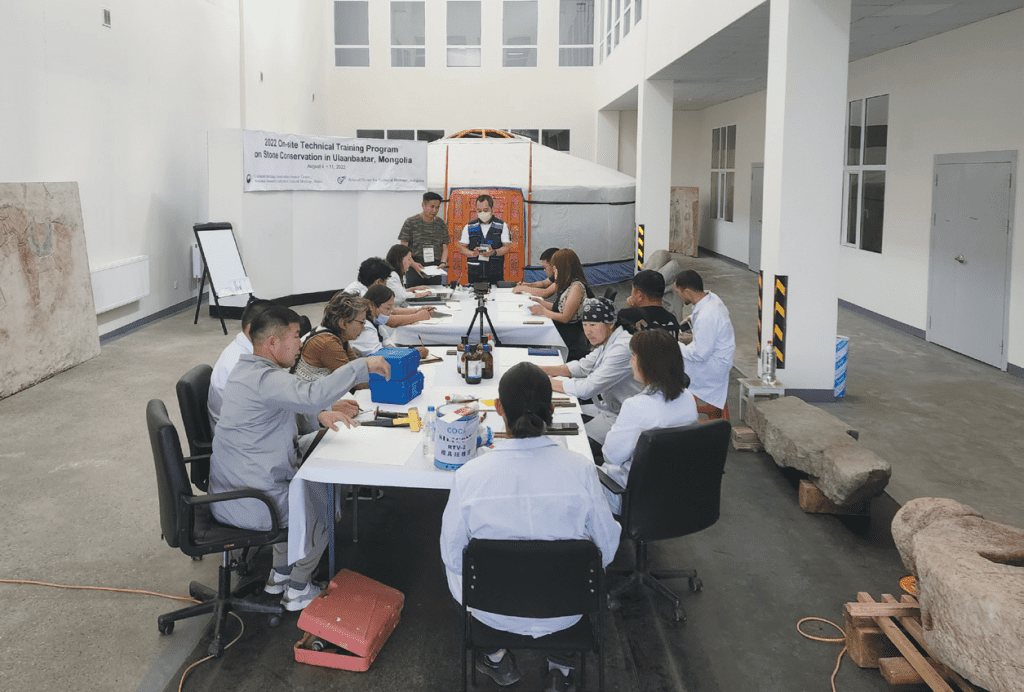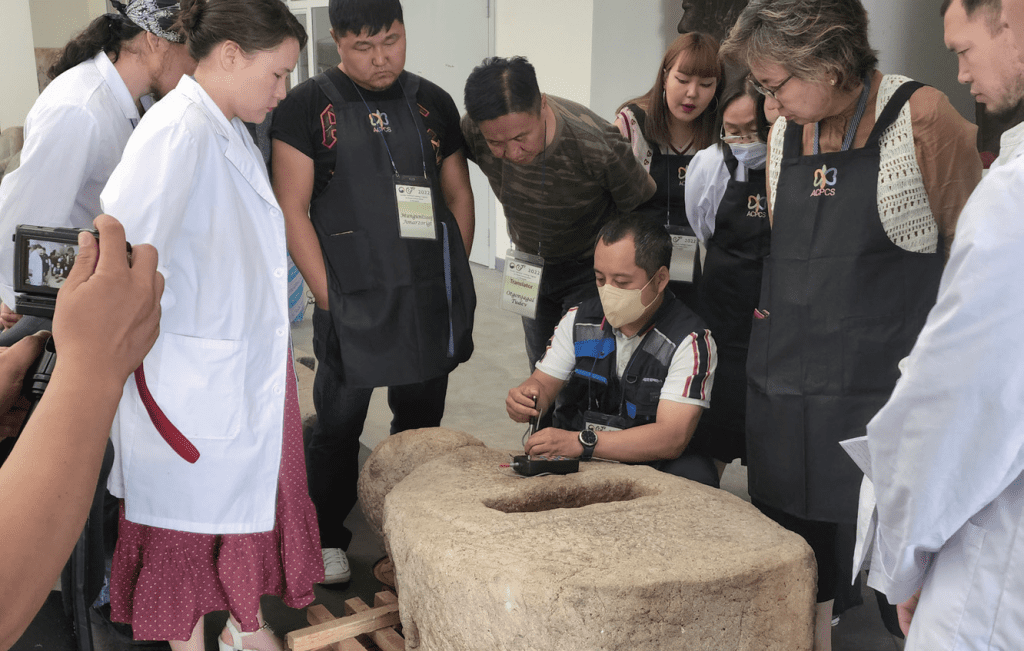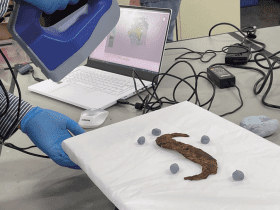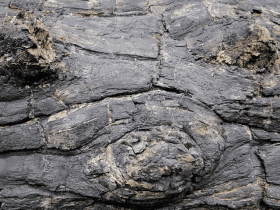Cultural Heritage Conservation Science Center
LEE Jaesung
Between August 2 and 12, 2022, the NRICH Cultural Heritage Conservation Science Center hosted the on-site technical training program(OTTP) for 15 cultural heritage conservation specialists from Mongolia’s National Center for Cultural Heritage(NCCH). This initiative is a “locally customized” program to assist the key Asian partner countries with cultural heritage conservation challenges by dispatching the NRICH conservation science experts from Korea. Since 2013, we have expanded our training efforts to Mongolia, Cambodia, Myanmar, Bhutan, and Sri Lanka and this on-site training session resumed for the first time in two years due to the COVID-19 pandemic.
Training and Practice Session in the Conservation of Stone Cultural Heritage
The Mongolia training program emphasized practical application, covering conservation treatment materials, rock classification, assessing conservation status, contaminant removal, and structural reinforcement for damaged elements. In partnership with the NCCH, five specific stone figures, including a stele and a pedestal, were selected for the practical training application.
➀ Training in Whole-Rock Magnetic Susceptibility Measurement Method
The NRICH provided training on the whole-rock magnetic susceptibility method1) to classify and determine the constituent rocks of stone cultural heritage. Through this approach, the participants analyzed the dragon-pattern sandstone pedestal and the granite stele based on their magnetic susceptibility values. The training enabled Mongolian participants to easily access rock weathering at conservation sites using image figures and drew conclusions from objective data.
1) Whole-rock magnetic susceptibility method: The prevalent technique employed in deciphering the origin of stone artifacts, achieved by discerning lithological consistency with the rock’s source environment




➁ Training in Cleaning of Contaminants from Stone Cultural Heritage
Participants were trained in fundamental techniques for removing surface contaminants from stone cultural heritage, covering both dry and wet cleaning methods. During this session, a new cleaning approach was introduced to address the removal of challenging iron-oxidizing contaminants. The participants had hands-on experiences with this method which involved using a poultice with a mixture of oxalic acid and sepiolite. After practicing various methods, the participants discussed suitable cleaning techniques and precautions for Mongolia’s stone cultural heritage specifically, customizing them to their conservation treatment sites.




③ Hands-on Training in Structural Reinforcement of Damaged Stone Materials
The structural reinforcement practice, which focused on rejoining fractured areas, was a highlight for Mongolian participants. Trainees analyzed the load distribution that resulted in damage to a two-part stone figure and selected reinforcement methods based on a structural plan. They also learned to measure compressive strength of the fragmented components and calculate joint cross-sectional areas. These calculations helped them determine the ideal dimensions for titanium rods used in the joint, subsequently bonded with synthetic resin.
Although Mongolia benefits from foreign aid for cultural heritage conservation, this is the first hands-on training program provided focusing on conservation treatment and non-destructive testing of stone cultural heritage, with practical applicability on site. The training program was special for it facilitated collaboration among conservators from Mongolian institutions fostering mutual cooperation.




